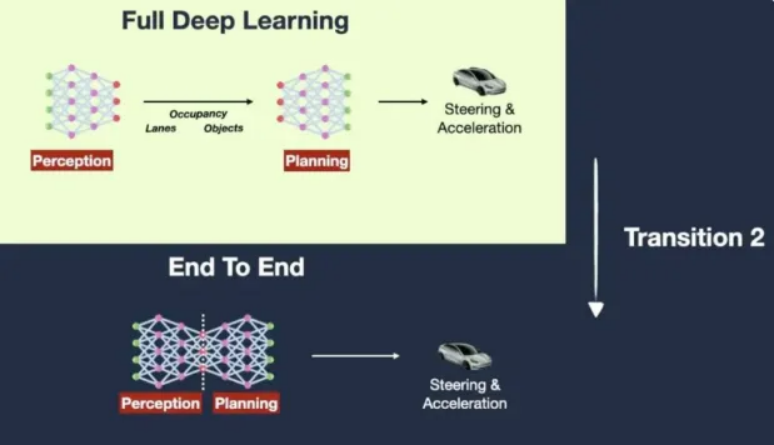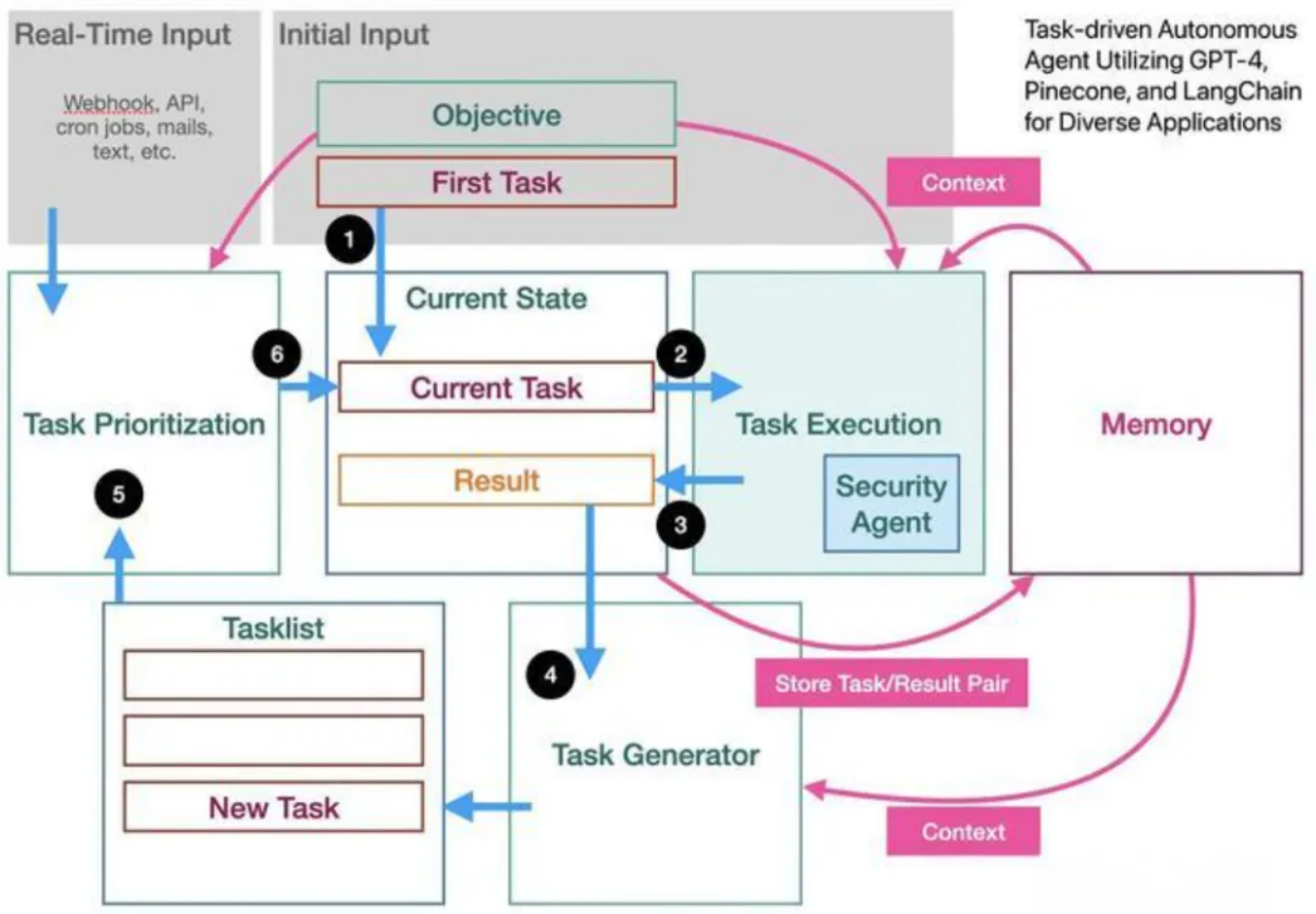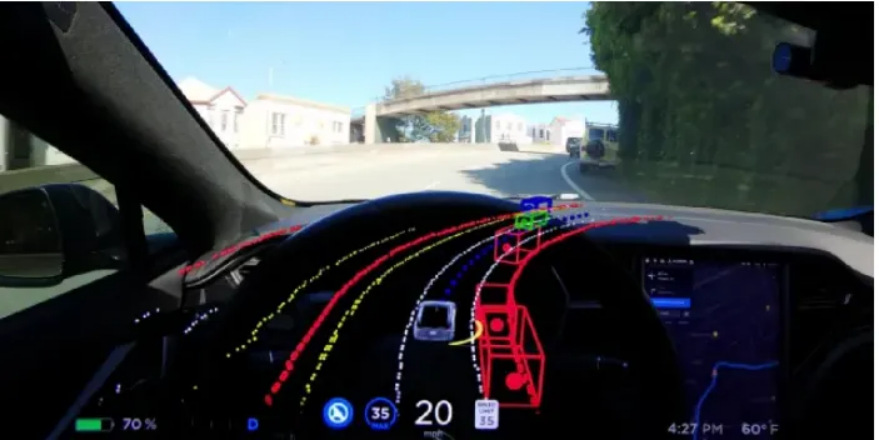Elon Musk's Beijing Visit: Breaking Ice with FSD China
Shortly after Musk's visit to Beijing, the China Association of Automobile Manufacturers and the National Computer Network Emergency Response Coordination Center issued a notice on the testing of four security requirements for automobile data processing. Tesla, as a foreign-funded enterprise, became one of the first batch of car companies to pass all four requirements. In FSD V12, Tesla made significant improvements to its navigation and route planning algorithms. The new version of the navigation system can intelligently plan driving routes, taking into account various factors such as traffic conditions, road changes, and driver preferences. Additionally, the new version of FSD has stronger real-time traffic analysis capabilities, allowing it to adjust routes based on actual conditions, ensuring a smoother driving experience. While Chinese car companies lag behind in underlying technology for autonomous driving, they have advantages in ecology and supply chains. With the infrastructure development of intelligent transportation, they are expected to integrate more competitive products.
With the end-to-end autonomous driving technology achieved by FSD V12, Tesla only needs to use abundant local driving data to train intelligent driving models, providing a superior driving experience. Moreover, by significantly reducing the use of rule-based code, Tesla does not need to establish a team of thousands of intelligent driving algorithm engineers in China. With only a local operations team of about 20 people and a data labeling team of hundreds of people, Tesla can ensure the smooth landing and operation of FSD in the Chinese market.
On May 16, 2023, after speaking at the annual Tesla shareholder meeting, Musk gave an interview to CNBC, a well-known American financial media outlet.
When discussing Tesla's AI capabilities, Musk said that Tesla is far ahead in real-world AI and it can be said to be unrivaled. He then addressed the host's question about ChatGPT and generative AI:
"I think Tesla will also have a 'ChatGPT moment,' if not this year, then I don't think it will be later than next year. This means that one day, suddenly, 3 million Tesla vehicles can drive themselves... then it's 5 million, then it's 10 million...
If we swap our positions, with Tesla building a language model that produces results no worse than ChatGPT, and Microsoft and OpenAI working on autonomous driving, if we exchange our tasks, there's no doubt we will win."
FSD is a full-link autonomous driving software and hardware architecture
FSD Architecture: A comprehensive end-to-end autonomous driving software and hardware framework is constructed across various levels including data, algorithms, and computational power, encompassing perception, planning, and execution.
Planning: Essentially addresses multi-object path planning issues, managing trajectories for both self and all objects to guide the vehicle in completing corresponding execution actions.
Neural Networks: Analyze inputs such as video streams to output complete kinematic states (position/velocity/acceleration/roughness) controlling the vehicle.
Training Data: Utilizes state-of-the-art 4D auto-annotation technology, upgraded simulation, and cloud computing resources to form a closed-loop data system.
Training Infrastructure: Includes CPU, GPU, Neural Network Accelerator units, and an AI compiler. The AI compiler supports new operations required by neural networks, mapping them to optimal underlying hardware resources.
AI Compilation & Inference: Addresses running neural networks on computers. The current inference engine can allocate the execution of a single neural network to two independent chip systems, akin to having two separate computers connected within the same autonomous driving computer.
In the end-to-end solution, neural network is the key and is expected to achieve the global optimal solution.
Compared to modular solutions such as expert models and hybrid models, end-to-end autonomous driving solutions integrate perception, planning, and control, removing rule-based code from each module. Information collected from multiple sensors is directly inputted into complex large-scale neural networks, which, after computation, can directly output driving control commands, resulting in an end-to-end system. The most significant advantage is reducing reliance on high-precision maps and reducing costs in intermediate stages; the model has a high upper limit and can achieve approximate global optimum solutions. Disadvantages include slower initial model learning, requiring massive training data for the model to emerge and achieve rapid progress, less explanation for simple scenarios compared to modular architectures, a high entry barrier due to a low model floor; poor interpretability of the "black box" in the middle, potentially resulting in more unexplainable decision behaviors than expert models.
Tesla's "Shadow Mode" also provides crucial support for FSD progress.
By collecting various driving data during user driving processes, Tesla can obtain high-value corner case data, continuously optimizing FSD performance. These data are stored in Tesla's data center, and after analysis and processing by the data engine, they can be used as training materials for the system, further improving FSD accuracy and reliability.
HW4.0 has stronger computing power, and large models progress remarkably.
The main sources of technical progress in this public beta version of FSD may come from the following aspects: First, FSD Beta V12 has been updated for the HW4.0 platform, providing stronger hardware support for the system. HW4.0 hardware upgrades increase the frame rate by 4 frames per second for cameras, enabling faster processing of image data and improving road detail recognition. In addition, HW4.0's computing power is doubled compared to HW3.0, allowing FSD to perform more efficient processing and calculations, speeding up decision-making.
Musk said the FSD V12 intervention rate is only one percent of V11
Tesla CEO Elon Musk said Tuesday on X platform that the intervention rate of Tesla's "Full Self-Driving" (FSD) software V12 version is only one percent of the V11 version. A user posted, "Compared with V11, the intervention frequency of V12 will be reduced by more than 100 times. This is not a gradual upgrade, but a leap.
Tesla will invest about $10 billion in AI training and inference
Musk also added that any company that cannot spend at least $10 billion annually or deploy it efficiently cannot compete in the market.
Recently, Tesla's end-to-end FSD V12 has gradually begun to be rolled out to North American users on a large scale. In short, FSD V12 achieves the goal of autonomous driving through a large amount of video training data, allowing Tesla to eliminate hundreds of thousands of lines of code. However, training such AI autonomous driving requires a large amount of computing power. Musk said in a live broadcast last August that Tesla is about to launch a GPU cluster consisting of 10,000 Nvidia H100s to train the new FSD system.
AutoX founder, chairman, and CEO Xiao Jianxiong told First Financial Journalists that Tesla's FSD has used end-to-end deep learning algorithms, which have significantly improved performance compared to before. In the past, it relied on manually written code-based rule algorithms, and now it uses a large model network trained with data.











